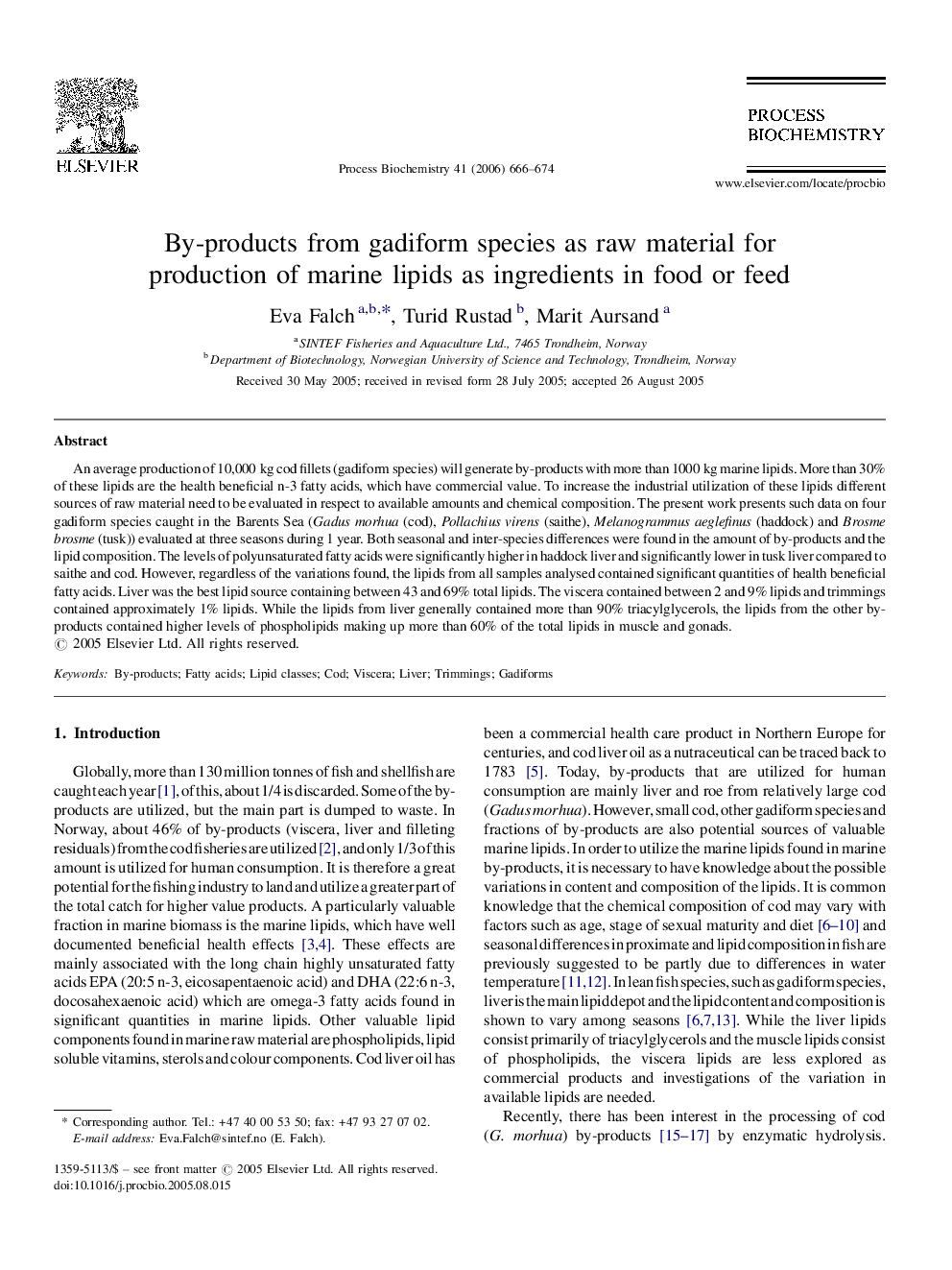| Article ID | Journal | Published Year | Pages | File Type |
|---|---|---|---|---|
| 36390 | Process Biochemistry | 2006 | 9 Pages |
An average production of 10,000 kg cod fillets (gadiform species) will generate by-products with more than 1000 kg marine lipids. More than 30% of these lipids are the health beneficial n-3 fatty acids, which have commercial value. To increase the industrial utilization of these lipids different sources of raw material need to be evaluated in respect to available amounts and chemical composition. The present work presents such data on four gadiform species caught in the Barents Sea (Gadus morhua (cod), Pollachius virens (saithe), Melanogrammus aeglefinus (haddock) and Brosme brosme (tusk)) evaluated at three seasons during 1 year. Both seasonal and inter-species differences were found in the amount of by-products and the lipid composition. The levels of polyunsaturated fatty acids were significantly higher in haddock liver and significantly lower in tusk liver compared to saithe and cod. However, regardless of the variations found, the lipids from all samples analysed contained significant quantities of health beneficial fatty acids. Liver was the best lipid source containing between 43 and 69% total lipids. The viscera contained between 2 and 9% lipids and trimmings contained approximately 1% lipids. While the lipids from liver generally contained more than 90% triacylglycerols, the lipids from the other by-products contained higher levels of phospholipids making up more than 60% of the total lipids in muscle and gonads.
